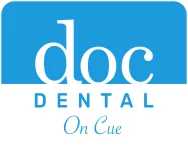Some Wisdom About Wisdom Teeth

Wisdom teeth are the name for your third permanent molars, which typically appear from age 17-25. It is thought the name “wisdom teeth” comes from the fact that they appear long after all your other permanent teeth, when you a much older and wiser. Most people have four wisdom teeth, one in each quadrant of the mouth (upper left, upper right, lower left, lower right). If your dentist has been doing updated x-rays of your mouth every year, they might be able to see where your wisdom teeth are going to come in, but there’s no guarantee on how wisdom teeth will behave.
In some cases, wisdom teeth come in (or erupt, as we dentists say) normally and function just like your other molars. In many other cases, however, wisdom teeth are impacted. Impacted means the teeth are stuck in the bone under your gums. Either there isn’t enough room for them to come in all the way, or they’re coming in at such a strange angle that it’s impossible for them to emerge from your gums.
Not all impacted wisdom teeth will cause problems, but wisdom teeth removal is still recommended for many patients, even when they are not experiencing any negative symptoms. The reason for this is wisdom teeth removal is much easier and less complicated the younger the tooth is. Younger wisdom teeth have less developed roots and are less likely to be near nerves. Also, younger people tend to heal better, so having wisdom teeth removed in the late teens or early twenties often provides for better results. As the wisdom teeth get older and get integrated into the bone of your jaw, they become harder to remove.
Some patients start experiencing pain and swelling soon after their wisdom teeth appear. In other cases, the wisdom teeth can come in only partially, creating an optimal place for bacteria and infection to grow between the partially exposed gum and other teeth. This infection is called pericornitis. In these situations, emergency wisdom teeth removal is usually recommended to relieve pain and prevent further complications. If you are in your late teens or twenties and are experiencing a toothache or jaw pain, visit the dentist to see if it could be related to your wisdom teeth.
Wisdom teeth removal is performed either by your dentist or an oral surgeon. Some dental clinics have an oral surgeon on staff, but others may require you to get a referral to a separate oral surgeon’s office. If your dentist doesn’t perform oral surgeries, they usually have a trusted local oral surgeon that they work with who they will refer you to.
Removing wisdom teeth is a fairly straightforward procedure. If your wisdom tooth has emerged from the gum normally (erupted), it will be “pulled” like any other tooth. If it is impacted, the dentist or oral surgeon may have to make an incision in the gum to access the tooth in the bone. The complexity of removing an impacted is particular to each patient’s situation. You dentist or oral surgeon will also help determine the level of sedation needed to keep you comfortable.
After wisdom teeth removal surgery, most patients experience some pain and swelling for several days. Your dentist or oral surgeon will give you post-operative instructions, like taking Tylenol or using ice packs, to help you heal and stay comfortable. You may also get a prescription for a stronger painkiller if necessary. You will also get recommendations on the types of soft foods you can eat until you’ve healed enough to chew again.
Did you know that not everyone develops wisdom teeth? In fact, the incidence of wisdom teeth in those with Tasmanian Aboriginal ancestry is practically zero. By contrast, nearly 100% of indigenous Mexicans have wisdom teeth.
